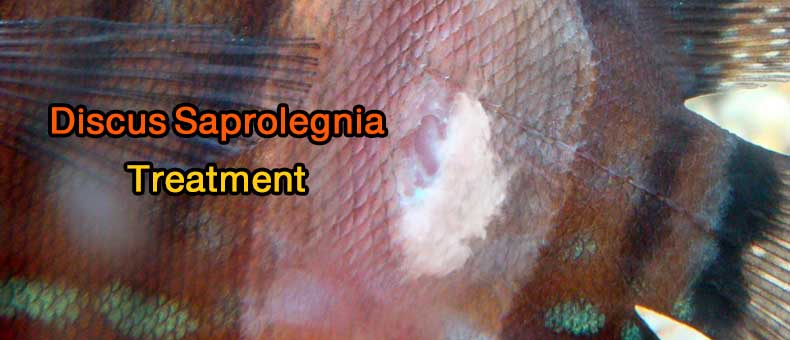
Table of Contents
- What is Discus Saprolegnia?
- Saprolegnia Symptoms
- Saprolegnia description and Causes
- How To Get Rid Of Saprolegnia In Discus?
- Saprolegnia Future Prevention Tips
- Conclusion
What is Discus Saprolegnia?
Fish Saprolegnia is a fungus on discus fishes. It is fungi that not only appear in fish but other aquatic organisms including plants. Another name by which fish Saprolegnia is known is “cotton wool disease”.
Saprolegnia Symptoms
The following are some of the symptoms of fish Saprolegnia:
- White or grey growth in and on the skin, fins, and mouth (at the onset).
- Growth begins to look like cotton wool much later.
- Presence of extra mucus.
- Death.
Saprolegnia description and Causes
Saprolegnia is basically fungus that grows on discus fishes typically called saprolegnia water mold.
If a disease or a wound causes any part of the skin of discus to die, Saprolegnia then attacks the dead skin.
If the condition turns out to be Saprolegnia, the area on the skin of the fish which looks like wool becomes more salient (grows beyond the body of discus). In the case of columnaris, the infected area is white, flat, and fuzzed making it look like the skin of Discus had a velvet stuck on it.
Because of the mycelium of Saprolegnia, new lesions are usually white – even after some time, it is usually in rare cases that those lesions become brown, green, or red in color maybe because the lesions captured either debris or algae.
If discus fish is pulled out of the aquarium water and observed, they feel slimy due to the several hairs that are growing on their scales and skin.
In some cases, Saprolegnia is referred to as “Winter Fungus” due to the fact that it is a disease that kills fishes when temperature falls (during winter), more so, it is during periods that are marked by low temperatures that the disease easily spreads.
When the fungus newly enters the aquarium, it mostly attaches itself to wood and appears like a ‘biofilm,’ white in color. Most of the time, a disease or an injury to the body of discus is what paved the way for the fish to be attacked by Saprolegnia.
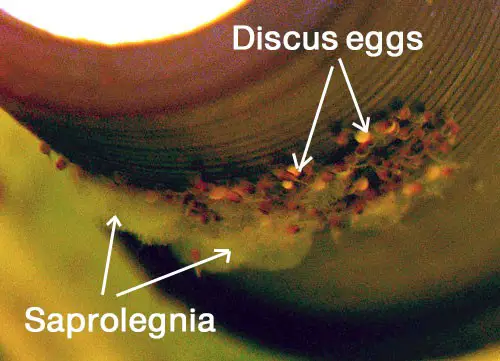
How To Identify Discus Saprolegnia?
There are 5 ways to identify the saprolegnia in discus:
- One obvious symptom of Saprolegnia is a fuzzy substance that looks like wool that develops on the body of discus and this is why the disease is often referred to as “cotton wool disease”.
- An infected discus fish has white pennants of white strands on its body.
- A subaltern infection is caused by both fungal or bacterial species that are white in color and look like cotton on the Discus body.
- Any infected tissue on the Discus fish, that tissue begins to die and a large hole having the red or white muscle around it is left in that area.
- Saprolegnia is related closely to diatoms which form as ‘brown algae’ in tank water.
How To Get Rid Of Saprolegnia In Discus?
Discus Saprolegnia Treatment Methods
Saprolegnia is a disease that is very deadly and it usually attacks one particular fish in an aquarium. Moreover, should discus or any other fish in the aquarium be infected, they would most certainly die in spite of how intense the treatment that is being given to the infected fish.
Saprolegnia being a water mold has thin cellulose walls much like other kinds of water molds. Antiseptics have no problem penetrating these walls which means that it is not exactly difficult to treat Saprolegnia. The challenge however is that since Saprolegnia is a secondary infection to a bacterial infection, the bacteria is what will be difficult to treat.
Below are 5 methods to treat Discus saprolegnia:
[METHOD 1] – Using Formalin/Malachite Green
Experts say that no other treatment is as effect in treating saprolegnia like malachite green.
Formalin on the other is used to either prevent or treat saprolegnia in fish eggs – it is a prophylactic that prevents the germination of cysts.
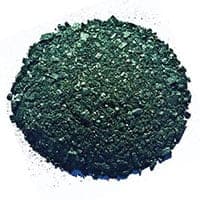

[METHOD 2] – Using Disinfectant Medicines
At a certain concentration, disinfectant medicines that have been shown to prevent and treat Saprolegnia.
Use one of the disinfectant medicines below to cure Saprolegnia:
- Hydrogen peroxide.
- Methylene blue.
- Potassium permanganate.
- Copper.
- Chloramine T.
- Iodine.

[METHOD 3] – Using Antibiotics
Antibiotics are effective on Saprolegnia alone not the primary bacterial infection.
Use antibiotics such as:
- Maracyn 2.
- Kanaplex.
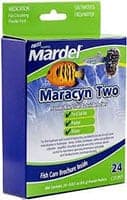
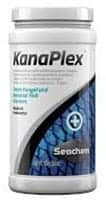
[METHOD 4] – Using Alternative Medications
Using any of the below medications:
- Ich-X.
- Rid-Ich Plus.
- Blue Planet White Spot Remedy.
- Waterlife Myxazin.
- Mardel QuickCure.
[METHOD 5] – Using Medicated Food
Medicated food is also effective on saprolegnia.
[1] – Heat 1/4 cup water (one oz.) in a microwave.
[2] – Blend one 1/4 oz. of plain gelatin derived from animals (Knox gelatin) into the water heated in the microwave and stir vigorously.
[3] – Then, mix in 2 tbsps. of dry commercial food pellets or flakes (fish food) in a little amount of hot water before adding it to the gelatin mixture.
[4] – Stir the entire mixture together until it becomes a paste.
[5] – Add about 1/16 tsp. of the medicine to the mud, and mix everything together properly.
[6] – Spread the mixture like a pancake with a thickness of 3 mm (1/8 inch) on a plastic plate or film.
[7] – Place the mixture in a fridge to refrigerate.
[8] – Feed your discus fish with it for at least a month.
Saprolegnia Future Prevention Tips
To prevent Saprolegnia, do the following:
- Maintain a warm temperature in the Discus tank between 82° – 86° F (30° – 34° C).
- Keep tank water clean and keep it as a healthy environment.
- Perform a 35 – 50% water change once weekly.
- Feed discus with a proper healthy diet.
Conclusion
Discus Saprolegnia is a disease that attacks discus fishes only after they have been injured or becomes a secondary infection to an existing one.
The disease can be treated when targeted, however, what will prove difficult to treat is the primary infection that discus has. The treatments for the disease include the use of formalin/malachite green (malachite green is very effective in treating saprolegnia), medicated foods, disinfectant medication (hydrogen peroxide, Methylene blue), and antibiotics (Maracyn 2 & Kanaplex).

I have a 16” koi in an outdoor pond with evident Saprolegnia… water temp is still below 50F .. it’s lethargic and hanging close to the surface. Help!!